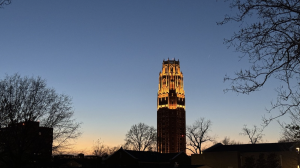Last week the Church of England failed yet again to approve a vote that would allow women to be ordained as bishops. The Anglican Church is appearing worryingly out of touch with contemporary society. This latest failure to secure equal rights for women within the establishment is only the most recent in a long battle with sexism within the Church. When Henry VIII created the Church of England after his break from Rome in 1534 and commenced the English Reformation, he declared himself Supreme Head of the Church of England. When his daughter, Elizabeth I, became queen and re-established the English church (after its brief return to Catholicism under her sister Mary) she was forced to change her title to Supreme Governor, which was less offensive to the male pride of the day. This title continues to belong to the English monarch.
The Church of England has always been slow to react to advances in women’s rights, however. Women only gained the ability to be ordained as priests in 1992, some 48 years after the first female Anglican bishop was ordained in Hong Kong, and 3 years after the first American woman. The first 32 female priests were finally ordained in 1994, and women currently make up one-third of Church of England clergy.
However, in order to get the measure passed, parishes were able to object to having a female priest appointed to them and were able to receive a male alternative. This has caused subsequent problems in advancing women within the Church, including last week’s vote. The vote failed to gain the two-thirds majority it needed in the House of Laity (lay church members elected by local dioceses) in order to be adopted, despite being passed in both other Houses and having the widespread support of all levels of clergy and church-goers. This is due principally to the Church of England’s hybrid nature, with mainstream Anglicans rubbing shoulders with Anglo-Catholics and evangelical Anglicans. Both of these groups are opposed to the ordination of female bishops due to theological reasons, just as they opposed the introduction of female priests in the 20th century. The continuing conservatism in these groups is therefore preventing the church from advancing in line with social attitudes.
The problem for the Church of England is significant. As the official state church, Anglican traditions are present in many national occasions and ceremonies; consequently, its refusal to anoint female bishops is a highly public and even international embarrassment. 23 women bishops are currently serving around the world in the Anglican Communion; perhaps even more embarrassing for the Anglican establishment in the UK is the fact that days before the vote, the first female Anglican bishop was appointed in Swaziland, a country notorious for its patriarchal society and polygamous monarch. As a result, many are concerned that the Church’s traditional leadership role is losing legitimacy by the refusal to accept women’s equality in a society where feminism has already achieved great gains.
[Image Credit: http://online.wsj.com/article/SB10001424127887324352004578131280869917550.html]






